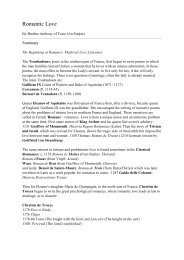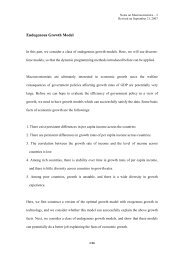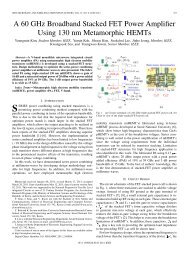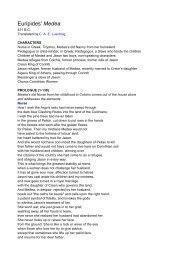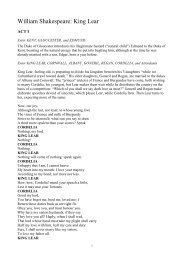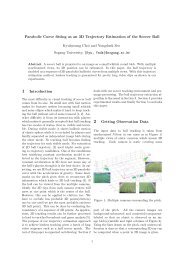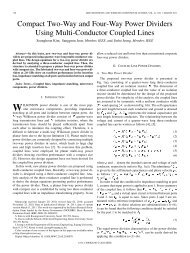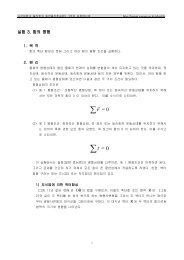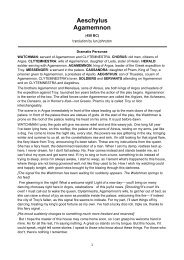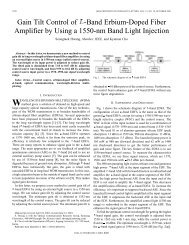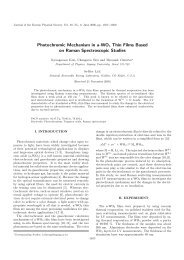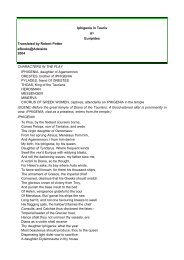Philip Sidney's Poetical Rhetoric in Astrophil and Stella
Philip Sidney's Poetical Rhetoric in Astrophil and Stella
Philip Sidney's Poetical Rhetoric in Astrophil and Stella
You also want an ePaper? Increase the reach of your titles
YUMPU automatically turns print PDFs into web optimized ePapers that Google loves.
<strong>Philip</strong> Sidney’s <strong>Poetical</strong> <strong>Rhetoric</strong> <strong>in</strong> <strong>Astrophil</strong> <strong>and</strong> <strong>Stella</strong> 249by be<strong>in</strong>g poisoned doth poison know” (16.13-14); “yet she hears, yet I no pityf<strong>in</strong>d, / But more I cry, less grace she doth impart” (44.5-6), etc. Sonnet 18 isespecially poignant <strong>in</strong> that its subject matter is “the affliction <strong>and</strong> ru<strong>in</strong> of virtue”that Cicero emphasizes above. In fact, the Petrarchan sonnet form’s comb<strong>in</strong>ationof the octave <strong>and</strong> the sestet formally <strong>in</strong>vites all modes of <strong>in</strong>vention. 3) Writ<strong>in</strong>gwithout <strong>in</strong>vention is a near impossibility, <strong>and</strong> suggest<strong>in</strong>g that one can do so isan open lie.The discovery that <strong>Astrophil</strong> secretly employs <strong>in</strong>vention while protest<strong>in</strong>gthat he does not heightens the dist<strong>in</strong>ction between the artificiality of rhetoric(<strong>and</strong> logic) on the one h<strong>and</strong> <strong>and</strong> the naturalness of poetry on the other. 4) AsAnthony Low po<strong>in</strong>ts out, <strong>Astrophil</strong> <strong>and</strong> <strong>Stella</strong> engages the Petrarchanconventions, question<strong>in</strong>g <strong>and</strong> scoff<strong>in</strong>g at them <strong>in</strong> a “rhetorical move” thatironically places him “still thoroughly with<strong>in</strong> the Petrarchan tradition”:His protests of s<strong>in</strong>cerity <strong>and</strong> of naturalness are a nice <strong>in</strong>stance of courtlysprezzatura, of art conceal<strong>in</strong>g art yet allow<strong>in</strong>g itself to be seen <strong>and</strong> to beadmired for its skill. This is only a superficial or a pretended resistance toconvention. (13-14)Sidney is said to have carried around a copy of Castiglione’s Il Cortegiano3) The rhetorical modes of def<strong>in</strong>ition (Sonnet 14), comparison (Sonnet 59), relationship(Sonnet 27), circumstances (Sonnet 69), testimony (Sonnet 21), enthymemes (Sonnet48) <strong>and</strong> fallacies (Sonnet 63), all fall with<strong>in</strong> the purview of topics that can begenerated by the 8 + 6 structure.4) The pair<strong>in</strong>g of rhetoric <strong>and</strong> logic may be a result of Sidney’s “acqua<strong>in</strong>tance withRamism,” as Forest Rob<strong>in</strong>son po<strong>in</strong>ts out (Sidney, Apology 13, n.53). Ramusreorganized the parts of rhetoric, assign<strong>in</strong>g <strong>in</strong>vention <strong>and</strong> arrangement to logic, <strong>and</strong>leav<strong>in</strong>g only style <strong>and</strong> delivery <strong>in</strong> rhetoric (memory was excluded from both arts).The l<strong>in</strong>k between Sidney <strong>and</strong> the English Ramists is tenuous, however, <strong>and</strong> Sidney<strong>in</strong> his poetry <strong>and</strong> Apology appeals frequently to Cicero as his authority <strong>and</strong> example.



